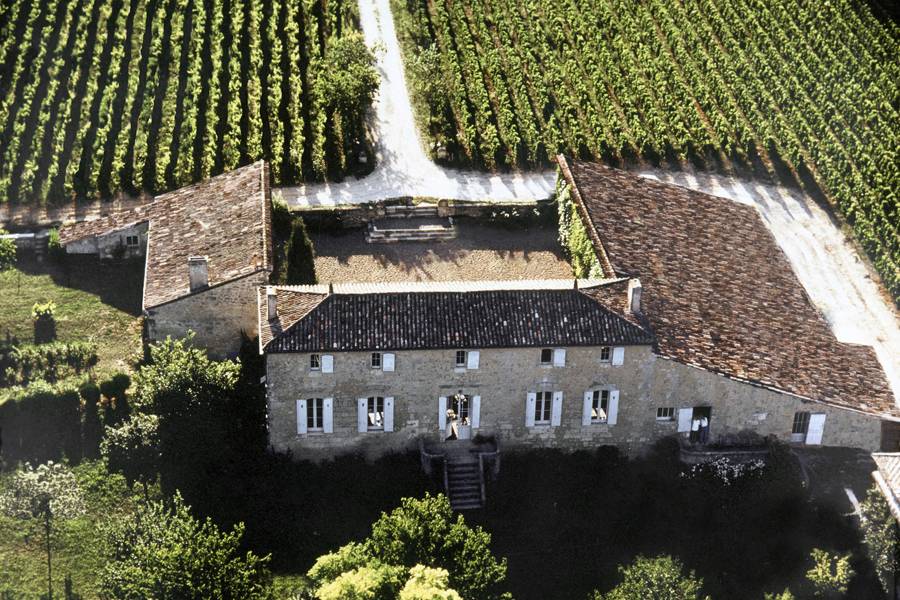- Colour Red
- Producer Château le Tertre Rôteboeuf
- Region St Emilion
- Drinking 2026 - 2040
- Case size 6x75cl
- Available Now
2018 - Ch Tertre Rôteboeuf Grand Cru St Emilion - 6x75cl
- Colour Red
- Producer Château le Tertre Rôteboeuf
- Region St Emilion
- Drinking 2026 - 2040
- Case size 6x75cl
- Available Now
Select pricing type
Need help? Call +44 (0)20 7793 7900 or email wine@goedhuiswaddesdon.com.
-
Goedhuis, April 2019, Score: 94-96
Francois Mitjavile’s tiny 6 hectare estate, planted with 80% Merlot and 20% Cabernet Franc, breaks the St Emilion mould. It offers a very different style to the rest of the appellation but is entirely worthy of its almost cult-like following. Not for the faint hearted at comfortably over 15% alcohol, but it is to Francois’s eternal credit that tasting this wine, you are oblivious to the alcohol. It is the complexity of layered sweet autumnal fruits and soft rounded tannins that provide the overall sensation. Francois rates this amongst the very best he has produced.
-
Antonio Galloni, April 2019, Score: 93-96
The 2018 Tertre-Rôteboeuf is a real powerhouse. Rich and explosive, the 2018 possesses stunning depth and fabulous textural intensity. Dark fruit, chocolate, spice, leather, tobacco and cedar add aromatic nuance, but more than anything, Tertre-Rôteboeuf is a wine that captures the heady, ripe personality of the year in spades. Alcohol approaches 16% and yet is not all that evident. The blend is 80% Merlot and 20% Cabernet Franc.
-
Matthew Jukes, April 2019, Score: 19+
It is always a joy to taste at Tertre Roteboeuf and, sadly, I was rather rushed this year so I didn’t manage to spend much time with the Mitjavilles as I would have liked. Nevertheless, as far as level of enjoyment per minute spent on site, this was, by far, the most successful visit of the week. Tertre Roteboeuf is always an opulent and flamboyant wine and the 2018 vintage is no exception. In spite of the seismic levels of alcohol this wine is super-smooth, and as Louis Mitjaville put it, ‘digest’. This one word sums up the elemental beauty of Tertre Roteboeuf in that it tastes cosmically beautiful but it is also a joy to drink and savour. In spite of the massive intensity and kaleidoscopic fruit this is an insanely pretty and velvety smooth wine. Heroic in all departments, I have no idea when it will start drinking let alone when it will finally run out of energy. I expect that it will perform miracles on your palate on any given date in the next half century and I guarantee that you will be amazed when you have tasted what I have had the immense pleasure of tasting today.
-
Julia Harding, April 2019, Score: 17++
Barrel sample. Very dark crimson. Intense red fruits and also intensely toasty/oaky, as this wine so often is en primeur. The fruit is concentrated and sweet but not overripe, the tannins deep and densely silky. At the moment the oak and the concentration give a very slight bitterness on the finish but I think this will disappear as the oak recedes and the lovely fruit emerges. (I tasted the 2017 straight after this and although it is still oaky, the fruit is becoming more obviously the core of the wine.) Just fresh enough, if not quite as fresh as in some vintages. Drink 2025-2036
Producer
Château le Tertre Rôteboeuf
The oddly named Tetre Roteboeuf (hill of the belching beef) - so called after the oxen used to till the soil - exploded onto the scene in in the 1980's with Francois Mitjavile, the unique winemaker at the helm. His determination and single-mindedness to produce wines comparable to those from the likes of Pétrus and Lafleur in intensity and extract, in his vineyard southeast of St.Emilion, have apparently paid off.The 5.7 he...Read more
The oddly named Tetre Roteboeuf (hill of the belching beef) - so called after the oxen used to till the soil - exploded onto the scene in in the 1980's with Francois Mitjavile, the unique winemaker at the helm. His determination and single-mindedness to produce wines comparable to those from the likes of Pétrus and Lafleur in intensity and extract, in his vineyard southeast of St.Emilion, have apparently paid off.The 5.7 hectares of vineyards are planted with 85% Merlot and 15% Cabernet Franc. Mitjavile's harvests his grapes late - the grapes must be perfectly ripe, resulting in raisin-like lusciousness (Tertre Roteboeuf's trademark) and he keeps his yields small. He uses 100% new oak for the 18-22months of ageing. Parker states in his Bordeaux guide: "Le tertre Roteboeuf is irrefutably one of Bordeaux's superstars."Read less

Region
St Emilion
South of Pomerol lies the medieval, perched village of St Emilion. Surrounding St Emilion are vines that produce round, rich and often hedonistic wines. Despite a myriad of soil types, two main ones dominate - the gravelly, limestone slopes that delve down to the valley from the plateau and the valley itself which is comprised of limestone, gravel, clay and sand. Despite St Emilion's popularity today, it was not until the 1980s to early 1990s that attention was brought to this region. Robert Parker, the famous wine critic, began reviewing their Merlot-dominated wines and giving them hefty scores. The rest is history as they say. Similar to the Médoc, there is a classification system in place which dates from 1955 and outlines several levels of quality. These include its regional appellation of St Emilion, St Emilion Grand Cru, St Emilion Grand Cru Classé and St Emilion Premier Grand Cru Classé, which is further divided into "A" (Ausone and Cheval Blanc) and "B" (including Angélus, Canon, Figeac and a handful of others). To ensure better accuracy, the classification is redone every 10 years enabling certain châteaux to be upgraded or downgraded depending on on the quality of their more recent vintages.




